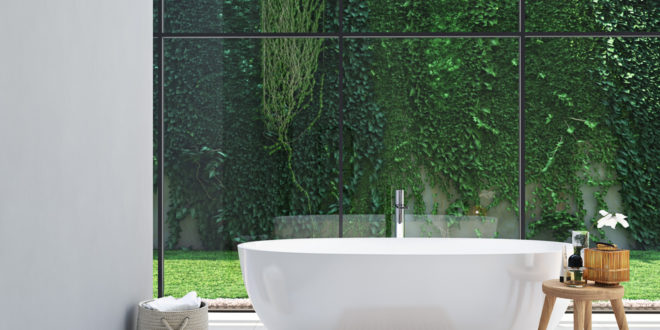In an era where environmental consciousness is paramount, the choice of materials for interior design and construction carries significant weight. Marble, with its timeless beauty and versatility, has long been a preferred choice for various applications, but it’s not often associated with eco-friendliness. However, there are compelling reasons to consider going green with marble. Here are a few environmental benefits of using marble, shedding light on how this natural stone can align with sustainability goals and contribute to a more eco-conscious world. From its durability and recyclability to its minimal environmental impact, these things will tell you why marble deserves a place in the green building movement, where beauty and sustainability coexist in harmony.
Durability and Longevity of Marble
One of the standout qualities of marble that aligns with sustainability is its exceptional durability and longevity. Unlike many other construction materials that may wear down or deteriorate over time, marble exhibits remarkable resilience. It has a proven track record of withstanding wear and tear gracefully over the years. In essence, marble surfaces possess an enduring quality that can last for generations when properly maintained.
This longevity significantly reduces the need for frequent replacements, thus diminishing the consumption of valuable resources and the environmental impact associated with producing new materials. By choosing marble, individuals and businesses alike contribute to the promotion of sustainable practices by minimizing the environmental footprint linked to constant renovations and replacements.
Low Maintenance Requirements
Marble’s low maintenance requirements further bolster its credentials as an environmentally responsible choice. Unlike some other building materials that demand rigorous and frequent cleaning regimens involving chemical treatments, marble surfaces are relatively easy to maintain. In most cases, routine dusting and occasional gentle cleaning with a mild, eco-friendly detergent suffice to keep them looking pristine.
This streamlined maintenance approach translates into fewer chemical cleaners being used and less water consumed. By minimizing the need for harsh chemical products and reducing water usage, marble promotes a more eco-conscious and sustainable method of maintaining interior spaces, ensuring that cleanliness and environmental responsibility can go hand in hand.
Natural and Non-Toxic
Marble’s innate composition aligns seamlessly with sustainability goals. Being a completely natural material, it contains no harmful chemicals, synthetic additives, or volatile organic compounds (VOCs) that can be found in some man-made materials.
This natural composition ensures that the use of marble in construction and interior design contributes to healthier indoor air quality. Unlike certain synthetic materials that may release harmful substances into the environment over time, marble stands as a non-toxic choice. This not only creates a safer and more pleasant indoor environment but also reduces the risk of off-gassing, which can be a significant concern with some synthetic materials.
Recyclability of Marble
While marble itself is not typically recycled in the same manner as metals or plastics, it possesses a unique quality that adds to its sustainability profile: recyclability through repurposing. Old marble pieces, such as countertops or flooring, can often be reclaimed and transformed into new products or integrated into other construction projects.
This recycling potential extends the useful life of marble, reducing the demand for virgin resources. By choosing to reuse and repurpose marble, individuals and businesses contribute to sustainability efforts by minimizing waste and conserving valuable materials. It’s a testament to the resourcefulness of marble and its capacity to remain environmentally responsible even beyond its initial application.
Aesthetic Timelessness
The aesthetic appeal of marble is timeless, transcending trends and fads. Unlike some contemporary materials that may fall out of favor as design trends evolve, marble’s timeless elegance endures. Choosing natural stone slabs for interior design elements such as countertops and flooring, especially if you opt for marble stepsthat look amazing no matter where you position them.
This longevity contributes to sustainability by reducing the likelihood of renovations driven by changing aesthetics. It fosters a more sustainable approach to interior design, one that values durability and timeless beauty over fleeting trends, ensuring that the environmental impact of constant renovations is minimized.
Energy-Efficient Production
The production of marble stands out for its relatively low energy consumption compared to certain alternative materials. Quarrying and processing marble typically require less energy input, especially when compared to the energy-intensive manufacturing processes of some synthetic materials. This energy efficiency is a key factor that bolsters marble’s sustainability credentials.
By choosing a material that involves lower energy demands in its production, individuals and businesses play a role in reducing carbon emissions and mitigating the environmental impact of their construction and design choices. It’s a nod to the eco-conscious aspects of marble that resonate with those striving to minimize their carbon footprint.
The decision to go green with marble is grounded in a rich tapestry of environmental benefits that extend far beyond its renowned beauty and versatility. Its exceptional durability, minimal maintenance requirements, natural composition, and recyclability all make it a natural choice for eco-conscious individuals and businesses. By choosing marble as a material for construction and interior design projects, individuals and businesses not only embrace beauty but also promote sustainability and environmental responsibility.



